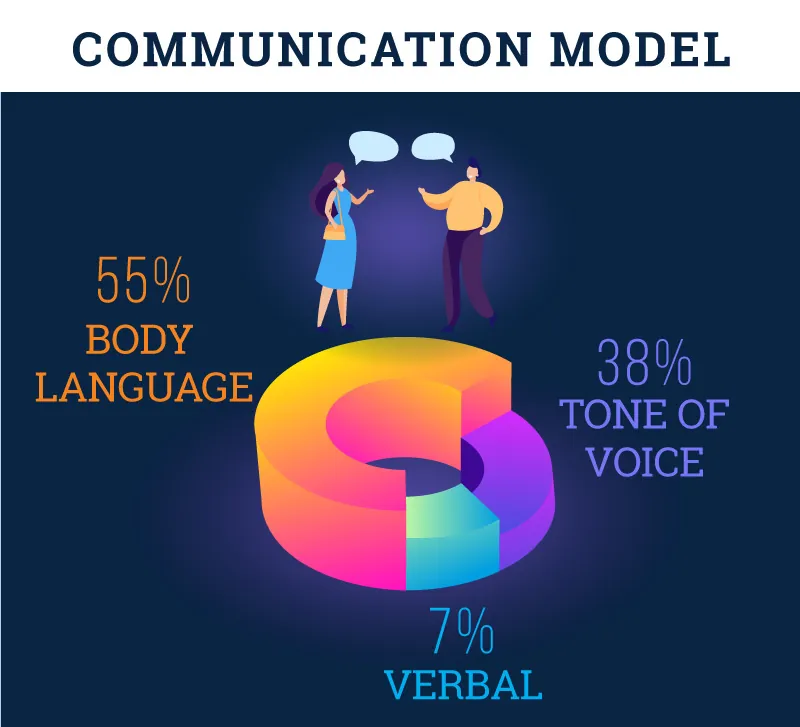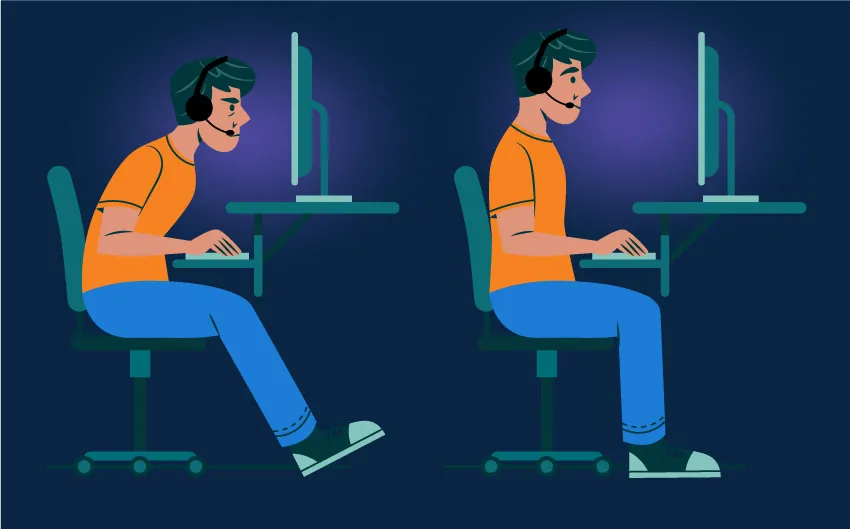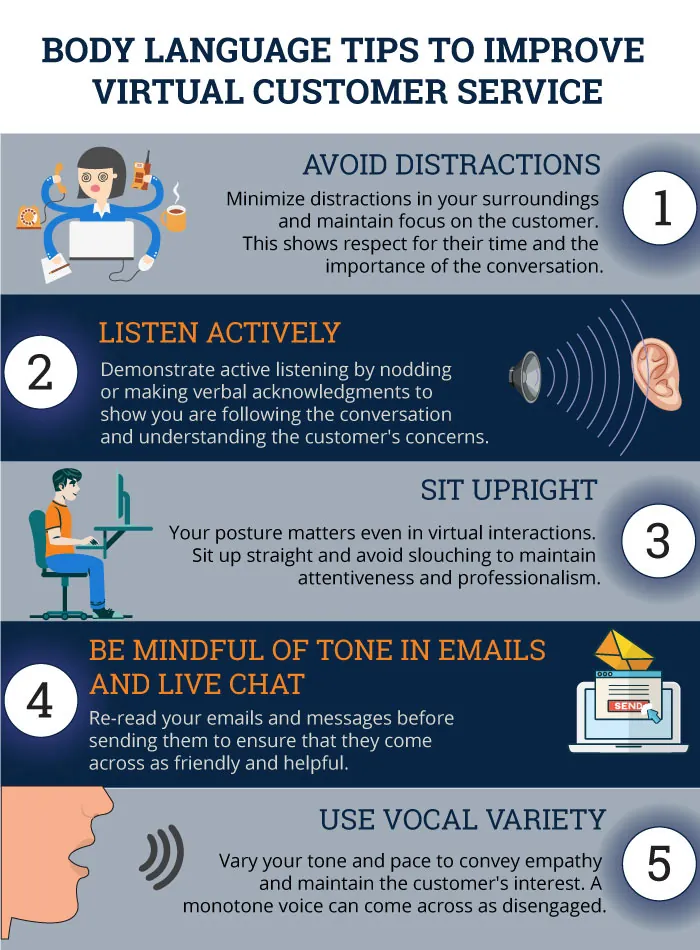In the customer service industry, we focus so much on what we say to customers rather than how it is being said. We write scripts, teach language best practices, and memorize empathy statements. But did you know that verbal language accounts for only 7% of how one is perceived? That means that non-verbal cues such as tone of voice and body language make up 93% of people's opinions of you.
So, how does this communication model transfer to phone conversations? Can body language really influence the way a customer perceives their interaction with an agent? The answer is yes, and we will discuss how and why this is the case. But first, we will have a look at the study by Albert Mehrabian, which explains the communication model.
Silent Messages – A Communication Model
In the 1960s, Albert Mehrabian, a UCLA professor, studied the three components of in-person communication (body language, tone of voice, and verbal language) and how they account for the ability to discern "liking" in another person.
In other words, Mehrabian wanted to determine the extent of the influence of verbal and non-verbal communication on whether someone is perceived as likable or not. For example, if a grocery store clerk is speaking to you, how much of what they are actually saying matters? Does their tone of voice have more of an impact on your opinion of them? Or is it their body language?
Mehrabian sought to answer these questions numerically. His study resulted in the 7-38-55 rule. An individual's opinion on whether a person is likable is influenced 7% by verbal language, 38% by tone of voice, and 55% by body language/facial expressions.

How Does Body Language Impact Phone Conversations?
With body language and facial expressions making up such a large chunk of the in-person communication model, how does this impact virtual communication when body language and facial expressions are hidden?
When agents speak on the phone to a customer, they could be lying on their bed, slouched over their desk, or even knitting, which the customer likely wouldn't know. Or would they? The truth is that posture and facial expressions strongly impact your tone of voice. Therefore, a customer could hear the difference in your voice whether you're sitting upright or slouched over.
Your posture affects the way you breathe, and the way you breathe affects the way you speak. When you're slouched, your breathing is restricted because your chest is more compressed. This makes it harder to speak and can make your voice sound dull and uninterested over the phone.
Slouching or sitting with your chin close to your chest constricts your vocal cords, making your voice sound more muffled and quieter. Whereas when you sit up with a straighter back, your voice sounds clearer and more upbeat. Try it yourself and notice the difference in your tone of voice.

Here is an example of the difference that the tone of voice can make in a phone call: A babysitter is watching two children, and when the parents call to ask about how their children are doing, the babysitter answers in a slow and lowered voice. Immediately, the parents feel more anxious because they associate this tone with the delivery of bad news. However, the actual content of what the babysitter said was nothing bad.
Another way body language can impact our tone is in our facial expressions. Have you ever been able to tell that someone is smiling over the phone while they talk to you? Well, if you have, you didn't imagine it. Facial expressions change the facial and neck muscles, affecting your voice.
For example, when we frown, our voices sound deeper and more strained. Whereas when we smile, our voices are higher and lighter. This is why so many agents are trained to smile when they answer the phone.
Why Does Body Language Matter When Talking On the Phone?
Positive body language affects your tone of voice and energy level. Using positive body language can help convey enthusiasm and engagement in your conversation, making the customer feel more valued and appreciated.
Although the customer cannot see your body language directly, the positive energy you project can translate into your voice and choice of words. This can create a more favorable impression on the customer, increasing trust and confidence in your abilities.
Additionally, your body language affects how you perceive the conversation and how you respond. By using positive body language, you may be more inclined to actively listen, respond thoughtfully, and demonstrate a genuine interest in the customer's needs.
What Is Positive Body Language?
Positive body language refers to non-verbal cues and gestures that convey openness, confidence, and positivity in interpersonal interactions. Positive body language can be expressed through various gestures and behaviors, including:
- Smiling
- Open Posture
- Nodding
- Using Open Palms
How Important Is Tone of Voice?
An agent's tone of voice is extremely important for improving customer experience. As shown in the communication model, tone of voice is over five times more impactful than word choice in a conversation. By improving the tone of voice, you can significantly improve customer satisfaction and first call resolution and increase call center cost savings.
SQM's research shows that an agent's tone of voice is highly correlated with the acceptance rate when conducting post-call surveys. In fact, a customer is almost twice as likely to stay on the line and answer the customer satisfaction survey questions when the agent uses a positive and upbeat tone rather than a lower tone.
A customer is also much more likely to be patient and understanding if the agent's tone of voice comes across as friendly and eager. This results in the customer facilitating the call process and increases the likelihood of resolving the call reason on the first call.
Training agents to answer the phone with a positive and upbeat tone is a simple way to increase Csat and NPS scores instantly. The tone of voice makes a huge difference in showing a customer that you are interested and listening to what they are saying. And when a customer feels like they have your full attention, they are much more likely to be happy with the customer service.
Imagine this scenario: you enter a clothing store to return a piece of clothing that you weren't satisfied with.
In the first scenario, you're greeted by a sales representative who is leaning on the counter and seems bored. When you explain to them the reason that you are returning your item, their tone of voice seems uninterested. They process your return and say, "Have a great rest of your day," in a low tone which you perceive as sarcastic.

You're likely to leave that store with a negative feeling, and the chances of you returning are probably not high, especially if you shop at other stores that also have nice clothes. If this sales representative had simply changed their tone of voice, they likely wouldn't have been perceived as unfriendly, bored, uninterested, and sarcastic.
In the second scenario, the sales representative is standing straight at the counter and greets you in a warm tone as you walk in. You immediately feel more comfortable initiating conversation with them. They speak to you in a positive tone, and at the end of the transaction, they say the same thing: "Have a great rest of your day." This time, you perceive the interaction as genuine and kind.

There is a reason for the common saying — "People don't always remember what we say, but they never forget how we make them feel."
Body Language Tips to Improve Virtual Customer Service
Using positive body language on the phone is not just about physically displaying gestures but also about maintaining a positive attitude and mindset throughout the conversation. A positive demeanor can make a significant difference in customer interactions leading to increased Csat. Here are some body language tips to improve virtual customer service:
- Avoid distractions: Minimize distractions in your surroundings and maintain focus on the customer. This shows respect for their time and the importance of the conversation.
- Listen actively: Demonstrate active listening by nodding or making verbal acknowledgments to show you are following the conversation and understanding the customer's concerns.
- Sit upright: Your posture matters even in virtual interactions. Sit up straight and avoid slouching to maintain attentiveness and professionalism.
- Be mindful of your tone in emails and live chat: Re-read your emails and messages before sending them to ensure they come across as friendly and helpful.
- Use Vocal Variety: Vary your tone and pace to convey empathy and maintain the customer's interest. A monotone voice can come across as disengaged.

You can find out whether the tone of voice is an issue among the agents in your call center through mySQM™ Customer Service QA Software, which provides many features, including 360-degree feedback and customer service reports.
mySQM™ is a great way to discover opportunities for improvement in your call center. With 360-degree feedback, you can gather data from multi-raters (e.g., customers, QA evaluators, and artificial intelligence) to determine where your call center is excelling and where it could improve.
